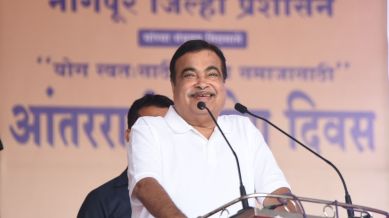Toll Tax rules update 2024—All you need to know about GNSS, 60 km toll rule and other NH fee rules
Union Minister of Road Transport and Highways of India, Nitin Gadkari's promising no toll plaza within 60 km on national highways has recently resurfaced the internet. Here's all you need to know.

Union Minister for Road Transport and Highways, Nitin Gadkari, recently announced that the road ministry has developed a master plan for national highways to enhance logistics, including provisions for motorways and high-speed highways, prepared under the PM Gatishakti Framework using a transportation model that analysed data from e-way bills (GST), tolls, and traffic surveys. Here is all you need to know about the newly announced GNSS toll system, the NH 60 km toll rule and more.
Global Navigation Satellite System (GNSS):
Gadkari also announced the implementation of the Global Navigation Satellite System (GNSS)-based toll collection system on select national highways in India, effectively terminating the existing traditional toll collection methods, that aims to modernise the tolling process and eliminate physical toll booths to enhance the efficiency of toll collection, marking a significant shift in India’s transportation infrastructure.
The GNSS-based tolling system utilises satellite technology to streamline the toll collection process by using GPS and GPS-Aided GEO Augmented Navigation (GAGAN) to accurately track a vehicle’s location and calculate tolls based on the distance travelled on highways.
A pilot study was conducted of the GNSS-based user fee collection system in the Bengaluru-Mysore section of NH-275 in Karnataka and the Panipat-Hisar section of NH-709 in Haryana, Gadhkari mentioned in a written reply to Rajya Sabha.
NHAI 60 km rule:
In 2008, the NH 60 km rule required that toll plazas on national highways should be at least 60 kilometres apart. Along similar lines, a video of Union Minister Nitin Gadkari promising no toll plaza within 60 km on national highways has recently resurfaced on the internet.
In the video, Gadkari stated that toll tax would not be collected at toll plazas located within 60 km of each other and that passes using Aadhar cards would be provided to residents living nearby, mentioning the implementation of this plan within three months.
Despite this statement, as per media reports, tolls have been collected at two plazas within 60 km on the Pathankot-Srinagar highway, contrary to the Minister’s assurances.
However, according to the official website of the Ministry of Road Transport and Highways, “In India, the tolling is generally under the open system, whereby fee payable is a fixed amount based on the length of stretch under one project which is normally 60 kilometres. If a stretch is of lesser length, a user fee of actual length only is collected.”
What’s a user fee?
As per the MoRTH, the user fee at a specific toll plaza is determined by the length of the road, any structures such as bridges or tunnels, the width of the highway, the applicable fee regulations, and the terms of the concession agreement.
Vehicles are categorized based on their size, load, the damage they cause to the road, and whether they are used for commercial or personal purposes, to ensure the safety and convenience of road users.
Other NHAI rules:
i. 10-second waiting time:
In line with the guidelines of the NHAI, the waiting time at toll plazas is limited to 10 seconds per vehicle. So, if a driver experiences a wait time exceeding this limit, they are not required to pay any toll fee. This initiative aims to streamline traffic flow and minimise delays for all.
ii. Mandatory use of FASTag:
The NHAI has made it compulsory for all vehicles, both commercial and private, to use FASTags for toll payments. This regulation has been in effect since February 2021, emphasising the importance of electronic toll collection in enhancing efficiency on national highways.
iii. One Vehicle, One FASTag:
Each vehicle must be equipped with a single FASTag linked to its unique registration number. Using one FASTag for multiple vehicles is prohibited and incurs penalties. Therefore, if you own more than one vehicle, you will need to obtain a separate FASTag for each.
iv. Vehicle queue within 100 metres:
To ensure smooth traffic flow, NHAI regulations state that vehicle queues at toll booths should not exceed 100 meters. A yellow line will be marked at this distance to help manage queues effectively. If a vehicle is waiting beyond this line, it can proceed without paying the toll until the queue is within the specified limit.
This measure is designed to maintain orderly traffic and reduce congestion at toll plazas.
In essence, these guidelines reflect NHAI’s commitment to improving the travel experience on national highways, ensuring that waiting times are minimised and toll processes are efficient.